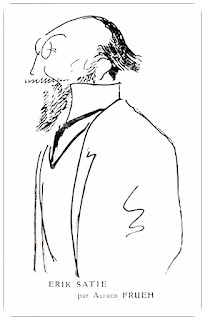The Prayers of the Bible 4 - Prayers of the Faithful
The Prayers of the Bible, from the book: "Prevailing Prayer" by D. L. Moody
When he was a student, Dr. Edward Payson wrote in his journal, which was later published as a memoir, “Since I began to beg God’s blessing on my studies, I have done more in one week than in the whole year before. Surely it is good to draw near to God at all times.”[7] Luther, when most pressed with work, said, “I have so much to do that I cannot get on without three hours a day praying.”
Prayers of the Faithful
Throughout history, all God’s people have been praying people. Look, for instance, at Richard Baxter.[1] He stained his study walls with praying breath, and after he was anointed with the Holy Spirit, he sent a river of living water over the city of Kidderminster in England, and converted hundreds.
The first true sign of spiritual life, prayer, is also the means of maintaining it. Man can as well live physically without breathing, as spiritually without praying. There is a class of animals – the cetaceous, neither fish nor seafowl – that inhabit the deep. It is their home; they never leave it for the shore, yet, though swimming beneath its waves, and sounding its darkest depths, they… [often must] rise to the surface that they may breathe the air.
When he was a student, Dr. Edward Payson wrote in his journal, which was later published as a memoir, “Since I began to beg God’s blessing on my studies, I have done more in one week than in the whole year before. Surely it is good to draw near to God at all times.”[7] Luther, when most pressed with work, said, “I have so much to do that I cannot get on without three hours a day praying.”
[1] Richard Baxter (1615–1691) was an English Puritan church leader, poet, hymn writer, and theologian.
[2] Martin Luther (1483–1586) was a German professor of theology, a composer, priest, and monk, and a key leader in the Protestant Reformation.
[3] George Whitefield (1714–1770) was an English Anglican cleric who was one of the founders of Methodism and the evangelical movement.
[4] John Wesley (1703–1791) was an English preacher and theologian who, with his brother Charles and fellow preacher George Whitefield, founded Methodism.
[5] Charles Grandison Finney (1792–1875) was an American Presbyterian minister and leader in the nineteenth-century Protestant revival in the United States.
[6] Dr. Thomas Guthrie (1803–1873) was one of the most popular preachers of his day in Scotland. The Way to Life was published by Robert Carter and Brothers in 1873.
[7] Edward Payson (1783–1827) was an American Congregational preacher. As published in A Memoir of the Rev. Edward Payson, D.D., Late of Portland, Maine, by Asa Cummings, 1830.
[8] Major General Sir Henry Havelock (1795–1857).
[9] Sir Matthew Hale (1609–1676).
[10] Robert Murray M’Cheyne, also spelled “McCheyne” (1813–1843).
[2] Martin Luther (1483–1586) was a German professor of theology, a composer, priest, and monk, and a key leader in the Protestant Reformation.
[3] George Whitefield (1714–1770) was an English Anglican cleric who was one of the founders of Methodism and the evangelical movement.
[4] John Wesley (1703–1791) was an English preacher and theologian who, with his brother Charles and fellow preacher George Whitefield, founded Methodism.
[5] Charles Grandison Finney (1792–1875) was an American Presbyterian minister and leader in the nineteenth-century Protestant revival in the United States.
[6] Dr. Thomas Guthrie (1803–1873) was one of the most popular preachers of his day in Scotland. The Way to Life was published by Robert Carter and Brothers in 1873.
[7] Edward Payson (1783–1827) was an American Congregational preacher. As published in A Memoir of the Rev. Edward Payson, D.D., Late of Portland, Maine, by Asa Cummings, 1830.
[8] Major General Sir Henry Havelock (1795–1857).
[9] Sir Matthew Hale (1609–1676).
[10] Robert Murray M’Cheyne, also spelled “McCheyne” (1813–1843).



